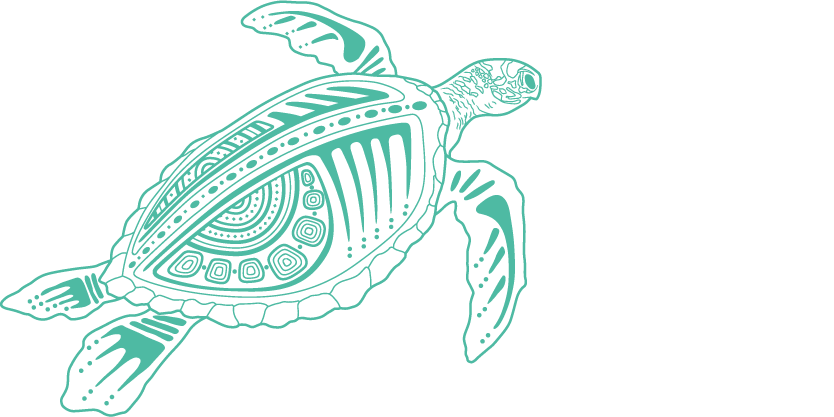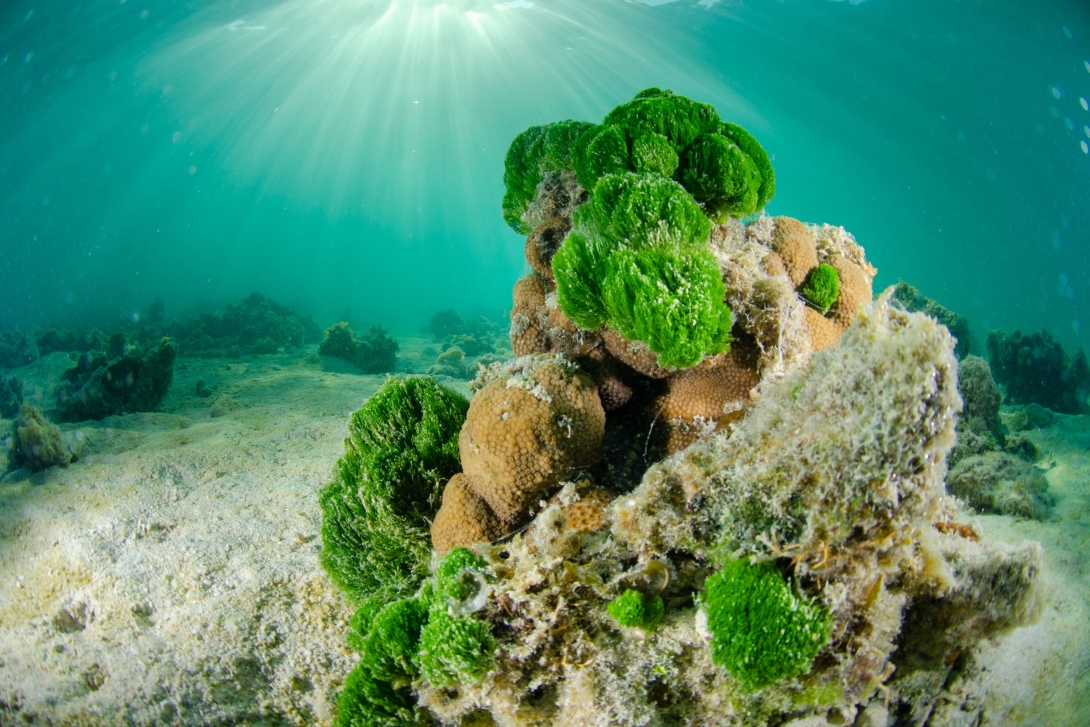42.
Waterhouse, J., Pineda, M., Sambrook, K., Newlands, M., McKenzie, L., et al. 2024, 2022 Scientific Consensus Statement: Conclusions, in 2022 Scientific Consensus Statement on land-based impacts on Great Barrier Reef water quality and ecosystem condition, eds J. Waterhouse, M. Pineda and K. Sambrook, Commonwealth of Australia and Queensland Government.
100.
Hamylton, S.M., McLean, R., Lowe, M. and Adnan, F.A.F. 2019, Ninety years of change on a low wooded island, Great Barrier Reef, Royal Society Open Science 6(6): 181314.
185.
Thompson, A., Davidson, J., Logan, M. and Thompson, C. 2023, Marine Monitoring Program Annual Report for Inshore Coral Reef Monitoring: 2021–22. Report for the Great Barrier Reef Marine Park Authority, Townsville.
190.
Thompson, A., Davidson, J., Logan, M. and Thompson, C. 2024, Marine Monitoring Program: Annual report for inshore coral reef monitoring 2022–23. Report for the Great Barrier Reef Marine Park Authority, Townsville.
264.
Diaz-Pulido, G. 2019, Macroalgae, in The Great Barrier Reef: Biology, Environment and Management, eds P. Hutchings, M. Kingsford and O. Hoegh-Guldberg, 2nd edn, Commonwealth Scientific and Industrial Research Organisation, Australia, pp. 207–218.
265.
Puk, L.D., Vieira, C., Roff, G., De Clerck, O. and Mumby, P.J. 2020, Cryptic diversity in the macroalgal genus Lobophora (Dictyotales) reveals environmental drivers of algal assemblages, Marine Biology 167(12): 188.
266.
Cardini, U., Bednarz, V.N., Foster, R.A. and Wild, C. 2014, Benthic N2 fixation in coral reefs and the potential effects of human‐induced environmental change, Ecology and Evolution 4(9): 1706-1727.
267.
Johansen, H.W. 2018, Coralline algae: a first synthesis, CRC press, Boca Raton.
268.
Macintyre, I.G., Steneck, R.S. and Ginsburg, R.N. 1997, Confusion concerning crustose corallines and coral reefs, Reef Encounter 22(8).
269.
Fulton, C.J., Abesamis, R.A., Berkström, C., Depczynski, M., Graham, N.A., et al. 2019, Form and function of tropical macroalgal reefs in the Anthropocene, Functional Ecology 33(6): 989-999.
270.
Tebbett, S.B., Crisp, S.K., Evans, R.D., Fulton, C.J., Pessarrodona, A., et al. 2023, On the challenges of identifying benthic dominance on Anthropocene coral reefs, Bioscience 73(3): 220-228.
271.
Birrell, C.L., McCook, L.J., Willis, B.L. and Diaz-Pulido, G.A. 2008, Effects of benthic algae on the replenishment of corals and the implications for the resilience of coral reefs, Oceanography and Marine Biology: An annual review 46: 25-63.
272.
Evensen, N.R., Doropoulos, C., Morrow, K.M., Motti, C.A. and Mumby, P.J. 2019, Inhibition of coral settlement at multiple spatial scales by a pervasive algal competitor, Marine Ecology Progress Series 612: 29-42.
273.
Del Carmen Gomez Cabrera, M., Young, J.M., Roff, G., Staples, T., Ortiz, J.C., et al. 2019, Broadening the taxonomic scope of coral reef palaeoecological studies using ancient DNA, Molecular ecology 28(10): 2636-2652.
274.
Cannon, S.E., Donner, S.D., Liu, A., González Espinosa, P.C., Baird, A.H., et al. 2023, Macroalgae exhibit diverse responses to human disturbances on coral reefs, Global Change Biology.
275.
Fabricius, K.E., Crossman, K., Jonker, M., Mongin, M. and Thompson, A. 2023, Macroalgal cover on coral reefs: Spatial and environmental predictors, and decadal trends in the Great Barrier Reef, PloS One 18(1): e0279699.
276.
Diaz-Pulido, G., Reyes-Nivia, C., Adame, M.F., Arthington, A., Collier, C. and Lovelock, C. 2024, 2022 Scientific Consensus Statement: Summary | Evidence Statement for Question 4.2: What are the measured impacts of nutrients on GBR ecosystems, what are the mechanism(s) for those impacts and where is there evidence of this occurring in the GBR? in 2022 Scientific Consensus Statement on land-based impacts on Great Barrier Reef water quality and ecosystem condition, eds J. Waterhouse, M. Pineda and K. Sambrook, Commonwealth of Australia and Queensland Government.
-
278.
Connell, S. D., Foster, M. S., Airoldi, L. 2014, What are algal turfs? Towards a better description of turfs, Marine Ecology Progress Series 495: 299-307.
279.
Lewis, B., Kennedy, E. V., Diaz-Pulido, G. 2017, Seasonal growth and calcification of a reef-building crustose coralline alga on the Great Barrier Reef, Marine Ecology Progress Series 568: 73-86.
280.
Whitman, T.N., Negri, A.P., Bourne, D.G. and Randall, C.J. 2020, Settlement of larvae from four families of corals in response to a crustose coralline alga and its biochemical morphogens, Scientific Reports 10(1): 16397.
281.
Smith, J.N., Mongin, M., Thompson, A., Jonker, M.J., De'ath, G., et al. 2020, Shifts in coralline algae, macroalgae, and coral juveniles in the Great Barrier Reef associated with present-day ocean acidification, Global Change Biology 26(4): 2149-2160.
282.
Jeong, S.Y., Gabrielson, P.W., Hughey, J.R., Hoey, A.S., Cho, T.O., et al. 2023, New branched Porolithon species (Corallinales, Rhodophyta) from the Great Barrier Reef, Coral Sea, and Lord Howe Island, Journal of Phycology 59(6): 1179-1201.
283.
Edmunds, P.J., Schils, T. and Wilson, B. 2023, The rising threat of peyssonnelioid algal crusts on coral reefs, Current Biology 33(21): R1140-R1141.
284.
Prazeres, M. and Renema, W. 2019, Evolutionary significance of the microbial assemblages of large benthic Foraminifera, Biological Reviews 94(3): 828-848.
285.
Mies, M. 2019, Evolution, diversity, distribution and the endangered future of the giant clam–Symbiodiniaceae association, Coral Reefs 38: 1067-1084.
286.
Tortorelli, G., Belderok, R., Davy, S. K., McFadden, G. I., van Oppen, M. J. H. 2020, Host genotypic effect on algal symbiosis establishment in the coral model, the anemone Exaiptasia diaphana, from the Great Barrier Reef, Frontiers in Marine Science 6: 833.
287.
Fujise, L., Suggett, D.J., Stat, M., Kahlke, T., Bunce, M., et al. 2021, Unlocking the phylogenetic diversity, primary habitats, and abundances of free-living Symbiodiniaceae on a coral reef, Molecular ecology 30(1): 343-360.
288.
Quigley, K.M., Ramsby, B., Laffy, P., Harris, J., Mocellin, V.J.L., et al. 2022, Symbioses are restructured by repeated mass coral bleaching, Science Advances 8(49): eabq8349.



